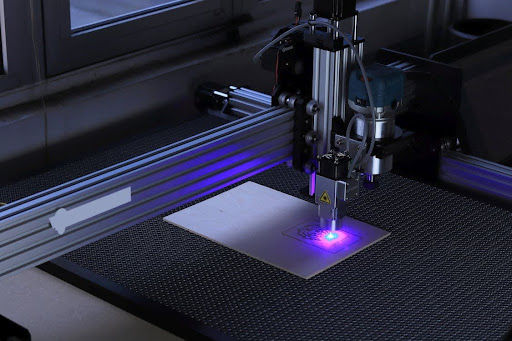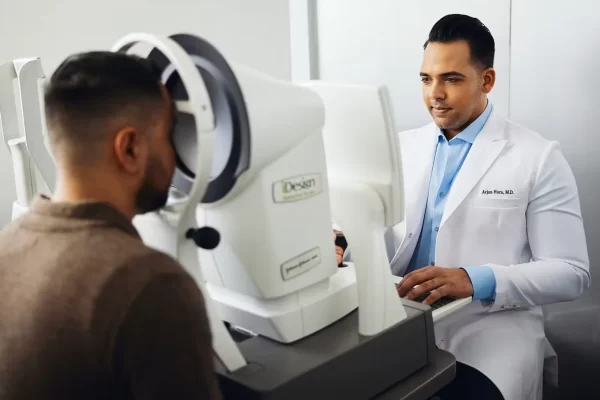If you are in the manufacturing industry, you probably already know that efficiency is one of the most important priorities. As such, you should be spending sufficient time trying to find new ways to streamline your processes.
There are a number of ways you may be doing this already, but it never hurts to be more efficient. In this context, laser processing solutions are one of the best ways you can improve your manufacturing work.
In fact, lasers have become so useful today that they are used across a wide variety of industries outside of manufacturing. From medicine to metrology, industrial lasers have more than proven themselves to be worth the investment. In this article, let us explore how you can start using them in manufacturing.
How Are Lasers Used in a Manufacturing Context?
Laser processing can occur in a number of ways, depending on your specific field. However, there are certain areas where its use is unrivaled. These include precision cutting, welding, engraving, marking, 3D printing, micro-machining, surface treatment, and more. They are also used in the packaging and labeling phase, which is equally important.
Let’s look at precision cutting, one of the most popular areas that benefits from laser processing.
If you are dealing with medical and healthcare manufacturing, a large amount of equipment is made with the aid of laser processing. Everything from stents, catheters, surgical instruments, orthopedic implants, and dental prosthetics undergoes some amount of laser processing.
It’s not just in the manufacturing of devices, though. Several treatments and pieces of equipment use lasers as part of their functioning. For instance, LASIK uses an extremely precise laser to change the very shape of your cornea. The fact that lasers are used for such delicate procedures should be a testament to their precision.
Similarly, if you are in the automotive field and manufacture car components, you know how important tight tolerances and seamless assembly are.
There are several parts that require extremely precise cuts. Without precision, some parts may even fail to function as they should. These include exhaust and engine compartment components, safety systems, etc.
What Types of Lasers Should You Invest In?
Well, this isn’t a straightforward answer because the type of laser you need will depend on your requirements. However, let’s simplify things a little bit and look at the different types of lasers and what they are best used for.
1. CO2 Lasers
If you need to cut a lot of non-metallic materials, like plastic, wood, or even fabrics, CO2 lasers are what you need. They are popular because they can be used on a wide range of materials. They also have a relatively large cutting area and are ideal for more industrial-scale applications.
When it comes to CO2 lasers, investing in low to medium power options can range from $2,000 to $10,000. High-end ones will naturally be a little expensive and can go over $100,000.
2. Fiber Lasers
Laser processing solutions revolving around cutting metals like steel and aluminum will need this type of laser. These fall under the solid-state laser category and use optical fibers to get the job done. They are extremely efficient and are particularly versatile in the range of applications they can be used for.
Fiber lasers are a bit more advanced, and the low power options can range from $10,000 to $20,000. As your requirements increase, so does the price, with medium-power ones over 100 watts ranging anywhere from $30,000 to several hundred thousand dollars.
3. Ultrafast and Picosecond Lasers
Perhaps the best option out there if you need something for micromachining work, these lasers are best for putting out rapid pulses of light. Because each emission is extremely short, the power can be extremely high. As a result, they are often used for certain laser processing requirements, like laser ablation and annealing.
These lasers can be a little pricey, and it’s worth talking over your requirements with an expert rather than purchasing generic options. It is possible to order custom laser processing solutions as per a specific requirement.
What About Complexity and Training Concerns?
When integrating any technology, there is understandably going to be some concern regarding integration and training requirements. With laser processing integration, laser safety courses will be critical.
This might include the Laser Safety Office (LSO) training and meeting the ANSI Z136.1 standards. Training courses will focus on providing personnel with an in-depth understanding of safety requirements and protective measures. That being said, Novanta Photonics states that lasers are actually safer than most types of machinery.
There will be a little complexity to the overall integration, considering that staff need to be trained on the software as well. Thankfully, there are simulation tools that can make the process a little easier.
To wrap things up, laser processing solutions are a fantastic way to improve the efficiency of manufacturing requirements. Their precision and other benefits make them invaluable to several industries.
Sure, they may require a little investment when it comes to acquiring equipment and training staff. However, once that’s out of the way, they more than pay for themselves.





